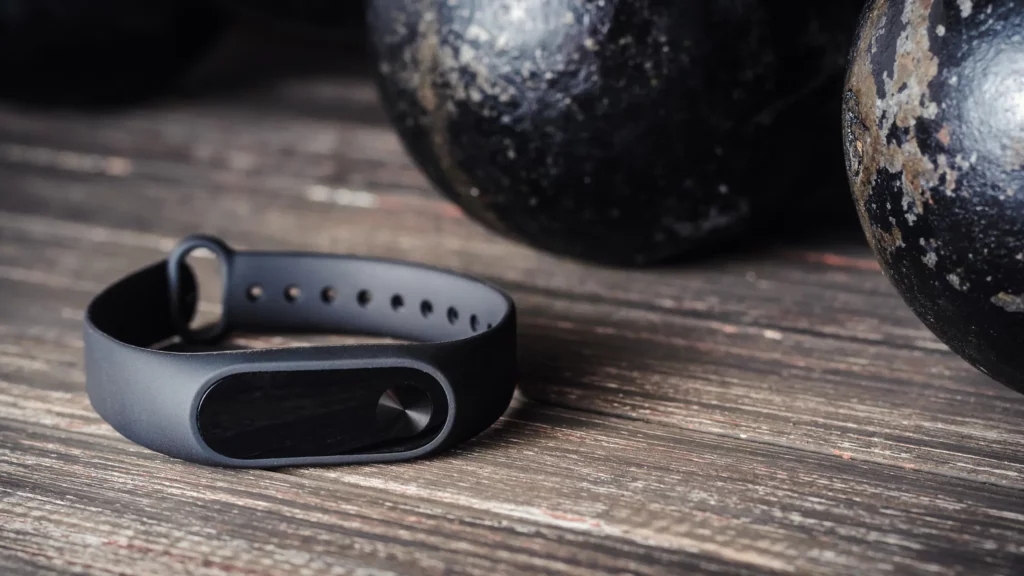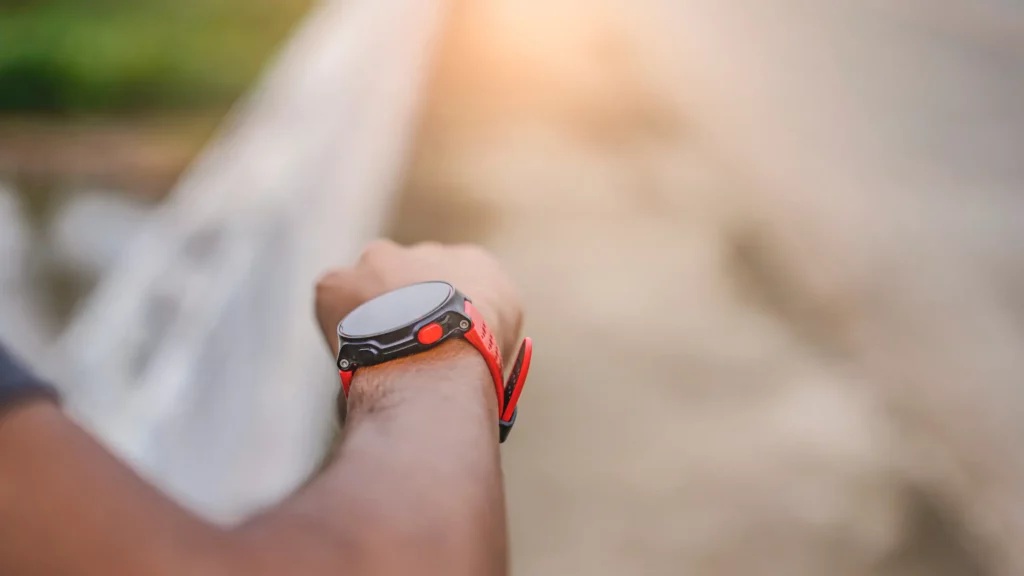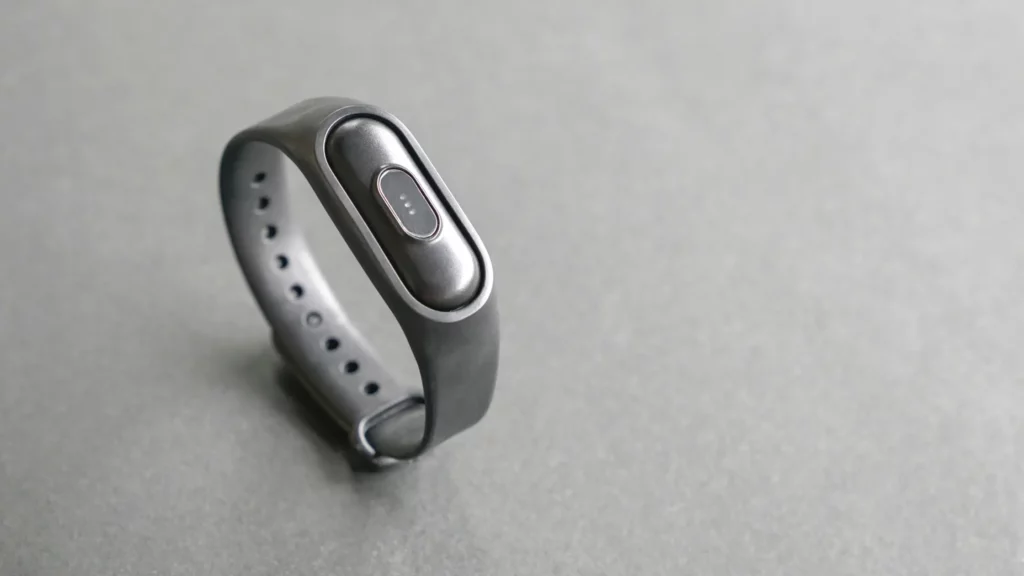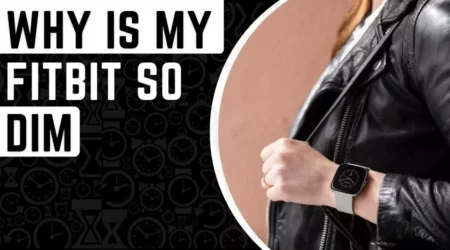Wearable technology has taken a major step forward in recent years, with the advent of smartwatches and fitness trackers. Fitbit smartwatches are one of the most popular brands of fitness trackers and are known for their accuracy and ease of use.
While most people wear Fitbits on their wrists, it’s possible to wear them on their ankles too. I’ll explore the benefits of ankle wear for Fitbits and how to do it properly.
Wearing a Fitbit on your ankle is not new, as many users have experimented with this alternative location.
Can I wear my Fitbit on my ankle? Read My Experience
Recently, I conducted an experiment, wearing my new Fitbit Versa 4 on my ankle for a week. Although the strap was a bit snug, making it difficult to wear 24/7,
I tested it during several exercise sessions and overnight to compare the results with wearing it on my wrist.
To my surprise, the results were quite favorable. The device accurately recorded my heart rate and step count, regardless of whether it was on my ankle or wrist.
When I repeated the same walk on different days, alternating between my wrist and ankle, I didn’t observe any significant difference. In fact, during a 20-minute walk, I observed an average increase of 130 steps when wearing the device on my ankle compared to my wrist.
However, there was a substantial difference in the step count during a stationary bike ride.
Though step count is likely not the primary statistic you’ll be monitoring during a spinning class or bike ride, I was surprised to find that wearing my Fitbit on my ankle resulted in 1,510 extra steps in just 30 minutes, compared to only 180 extra steps when worn on my wrist.
If you’re engaging in an activity where your hands are stationary but your legs are in motion, it might be beneficial to wear the device on your ankle.
It is important to note that Fitbits are primarily designed to be worn on the wrist, however, some users have reported that wearing the device on the ankle provides a more accurate reading for certain activities, such as cycling.
Comparison of wrist and ankle wear for Fitbits
| Feature | Wrist Wear | Ankle Wear |
|---|---|---|
| Comfort | Generally comfortable for all-day wear. Some may find it bulky or irritating. | Usually less noticeable than wrist wear but may be uncomfortable. |
| Accuracy | Generally considered accurate for tracking steps, but wrist movements. | Considered more accurate for tracking steps but may not track other activities |
| Style | A wide variety of styles and colors are available. | Limited styles are available. |
| Convenience | Easy to check stats and access other features. | Less convenient to check stats. |
Before exploring this alternative, it is essential to understand the difference between wrist and ankle wear and the impact it can have on the accuracy of the readings.
This guide aims to provide an in-depth look at wearing a Fitbit on the ankle, including the advantages and disadvantages, the types of devices suitable for ankle wear, and how to get the most accurate readings.
How to properly wear a Fitbit on the ankle?

To properly wear a Fitbit on the ankle, you should follow these steps:
- Choose the right size wristband or ankle strap for your device
- Place the device inside the ankle strap with the screen facing up
- Fasten the strap securely around your ankle, making sure it’s not too tight or too loose
- Make sure the device is positioned in the middle of your ankle bone
- Sync the device to your smartphone or computer to track your activity accurately.
Note: Some Fitbit models are not designed for ankle wear, so check your device’s specifications before attaching it to your ankle.
Best Fitbit Devices For Ankle

Tips for using a Fitbit on the ankle for accurate tracking
Choose the Right Ankle Strap:
Make sure to choose an ankle strap specifically designed for Fitbit devices, to ensure a secure and comfortable fit.
Wear the Fitbit on Your Non-Dominant Ankle:
To avoid interfering with arm movements and other body metrics, it is recommended to wear the Fitbit on your non-dominant ankle.
Ensure the Ankle Strap is Snug but Comfortable:

The Fitbit should be worn snugly on the ankle to prevent slipping or sliding, but should not be so tight as to cause discomfort or restrict circulation.
Keep Wrists Free:
If you are also tracking heart rate or other important metrics on your wrist, it is best to keep your wrists free and wear the Fitbit on your ankle to ensure more accurate readings.
Use the Fitbit for long Periods:
To get the most accurate results, it is recommended to wear the Fitbit for extended periods of time, rather than taking it on and off frequently.
Consider Wearing the Fitbit on Your Ankle While Exercising:

If you are participating in activities such as cycling or running, it may be more accurate to wear the Fitbit on your ankle, as arm movements can sometimes impact wrist-based activity trackers.
Monitor Your Sleep Tracking:
If you are using Fitbit for sleep tracking, wear it on your ankle at night for the most accurate readings.
Wearing a Fitbit on either the wrist or ankle can impact the accuracy of tracking and the features available. The wrist has been the traditional location for Fitbits, making wrist straps widely available and comfortable to wear.

However, wearing the device on the ankle can offer unique benefits such as more accurate step counting and tracking during activities where arm movements can throw off wrist-based trackings, such as cycling or weightlifting.
Wrist-based Fitbits also offer sleep tracking and heart rate monitoring, as well as access to other body metrics such as calories burned and oxygen levels.
Wearing the Fitbit on the non-dominant wrist can also ensure more accurate readings.
On the other hand, ankle-based Fitbits can offer extended periods of step counting and activity tracking, even when the arms are not moving. These devices can also provide more accurate step counting, as the ankle ensures that the device stays in place and is not affected by arm movements.
Ultimately, the decision between wrist and ankle wear will depend on personal preference and the specific activities and metrics being tracked.
Both wrist and ankle wear have their own advantages and disadvantages, and it is important to choose the location that best fits the individual’s needs and lifestyle.
Why We don’t Encourage The Wearing of Fitbit on the Ankle

Wearing a Fitbit on the ankle is not the standard or recommended method for tracking activity.
While it may be accurate for step counting, the accuracy of other metrics such as heart rate, calories burned, and sleep tracking may be compromised.
The wrist is the preferred location for Fitbit devices as it allows for more accurate tracking of a wider range of body metrics, including heart rate and wrist movements, which are important indicators of activity levels.
Additionally, the wrist is more convenient and comfortable for extended periods of wear.
Wearing a Fitbit on your ankle can provide more accurate tracking of your activity and is a good option for people with wrist problems.
Just be sure to wear the tracker in the right position, choose a comfortable strap or band, and avoid wearing it in the water.
Whether you choose wrist or ankle wear for your Fitbit, the important thing is to find the best option for your needs and wear it consistently for optimal tracking results.
FAQs about wearing a Fitbit on the ankle
Can I wear a Fitbit on my ankle while swimming?
No, Fitbits are not water-resistant, so they should not be worn while swimming or taking a shower.
Q: How long does the Fitbit ankle strap last?
The lifespan of the Fitbit ankle strap will depend on the frequency and intensity of use, as well as the quality of the strap itself. Most Fitbit ankle straps are made of durable materials and are designed to last for several months to a year.
Can I wear a Fitbit on my ankle while sleeping?
Yes, you can wear a Fitbit on your ankle while sleeping to track your sleep patterns. Just make sure the strap is snug and comfortable, so it doesn’t interfere with your sleep.
Can I Wear My Fitbit Somewhere Other Than My Ankle and Wrist?
Yes, you can wear your Fitbit on other places like your waistband or bicep, however, the wrist and ankle are the most common and recommended places for wearing a Fitbit for the most accurate tracking.
When Does It Make Sense to Wear Fitbit on Ankle?
It might make sense to wear your Fitbit on your ankle if you are involved in activities that primarily use your lower body, such as cycling or swimming, as it will provide more accurate readings for those specific movements.
Are There Companies That Make Fitness Trackers For The Ankle?
Yes, there are companies that make fitness trackers designed to be worn on the ankle.
If I Don’t Care About Heart Rate And Oxygen Levels, Is There A Way To Wear It On My Ankle?
Suppose you don’t care about heart rate and oxygen levels. In that case, wearing your Fitbit on your ankle should not affect its ability to track steps and other basic activity metrics accurately.
Can You Get Accurate Reading If You Wear Fitbit On Your Ankle?
Wearing a Fitbit on your ankle can provide accurate readings, but it also depends on factors such as the fit of the device, the type of activity being performed, and the level of comfort while wearing it.
Can You Wear A Fitbit On Your Ankle For More Accurate Cycling Results?
Wearing a Fitbit on your ankle can provide more accurate cycling results compared to wearing it on the wrist, but it still depends on the type of device and its ability to track movement accurately.
Can You Wear Fitbit Charge 3 On Your Ankle?
Yes, you can wear the Fitbit Charge 3 on your ankle with an adjustable ankle strap, but it is recommended to wear it on the wrist for more accurate heart rate tracking and other body metrics.






